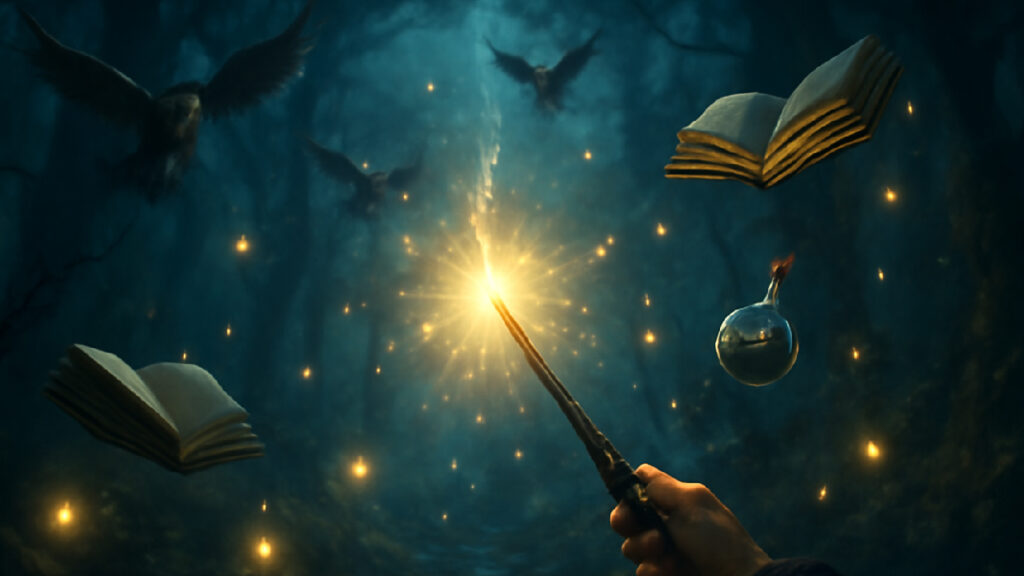
The True Nature of Magic in Harry Potter: Understanding Its Origins, Powers, and Impact on the Wizarding World
When we think of magic in Harry Potter, we often picture wands, spells, and enchanting creatures. But have you ever wondered about the true nature of magic in Harry Potter? ✨ What powers lie behind every spell cast, and how do these magical forces shape the wizarding world we’ve come to love? The true nature of magic in Harry Potter is far more complex and fascinating than it seems at first glance. It’s not just about the fantastical abilities—it’s a force that touches every aspect of the story, from the choices characters make to the very foundations of their world.
In this article, we’ll dive deep into the origins, powers, and far-reaching impact of magic within the Harry Potter universe. Whether you’re a seasoned fan or new to the series, understanding magic’s true essence will help you appreciate the intricacies that make the Wizarding World so captivating. So, grab your wand and let’s uncover the secrets behind one of the most powerful and mysterious forces in all of fiction! 🪄
By the end, you’ll not only understand where magic comes from but also how it influences every part of the wizarding world, from daily life to the epic battles we’ve seen on the big screen. Ready to explore the magic that’s been woven into the very fabric of J.K. Rowling’s world? Keep reading!
Table of Contents
ToggleThe Origins of Magic in the Harry Potter Universe
Magic is at the heart of the Harry Potter series, and understanding its origins is key to truly grasping the depth of the Wizarding World. But where does magic come from, and how did it become the powerful force we see today? Let’s explore the roots of magic in Harry Potter and how it has shaped the lives of witches and wizards for centuries. 🌿✨
Ancient and Inherent Magic
In the world of Harry Potter, magic is not a recent discovery—it’s an ancient, natural force that has existed for as long as the world itself. It is deeply connected to nature, existing within magical creatures, plants, and even the land itself. Magic is described as a living force that flows through everything in the wizarding world. 🌍
- Natural Magic: Magic in Harry Potter isn’t something created by humans—it’s inherent in the world. Wizards and witches tap into this natural energy through spells, potions, and enchantments.
- Magical Creatures: From Hippogriffs to dragons, magical creatures embody this raw, untamed magic. They are vital to understanding the deep connection between magic and nature.
This suggests that magic is not something invented, but rather discovered and harnessed by early witches and wizards. 🌿
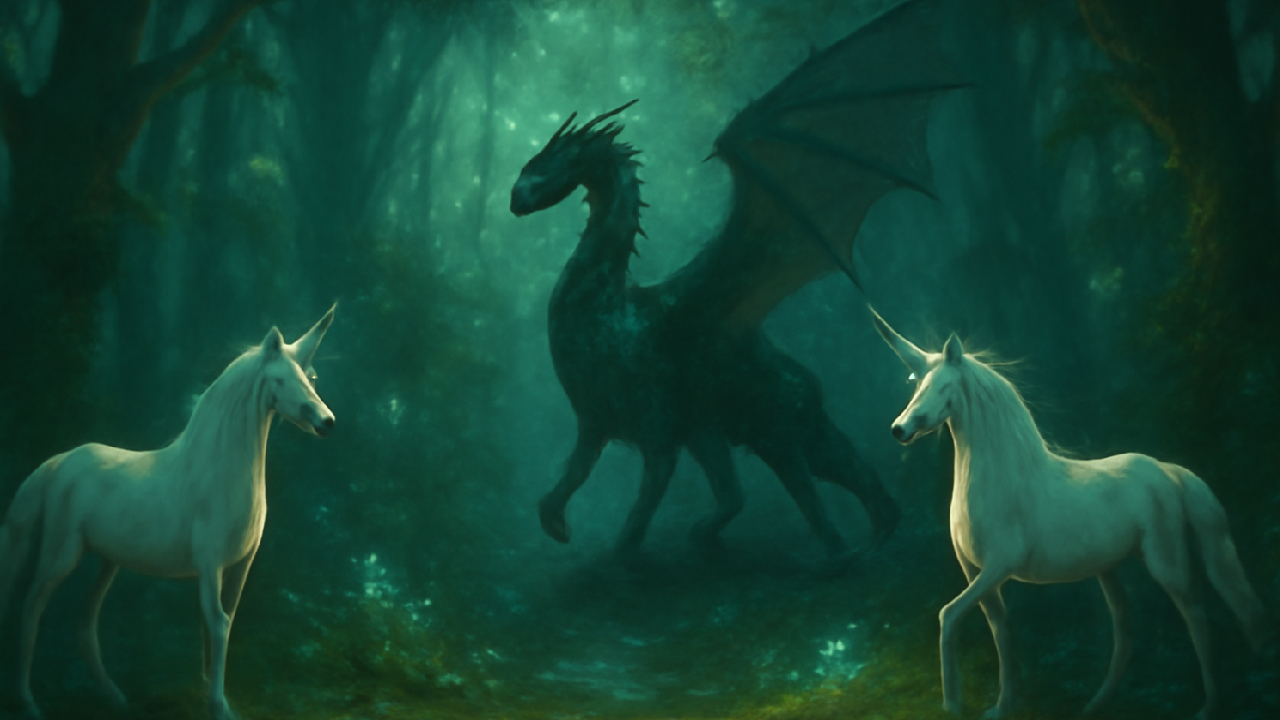
The Founding of Hogwarts and the Structuring of Magic
The first major milestone in the development of magic as we know it occurred with the founding of Hogwarts School of Witchcraft and Wizardry. Four great witches and wizards—Godric Gryffindor, Helga Hufflepuff, Salazar Slytherin, and Rowena Ravenclaw—were the first to structure magic into a formal system of education, passing their knowledge to future generations. 🏰
- The Four Founders: Each founder brought their unique perspective to the study of magic. Gryffindor emphasized bravery, Ravenclaw valued intelligence, Slytherin focused on ambition, and Hufflepuff believed in hard work and loyalty.
- Magical Curriculum: Hogwarts laid the groundwork for magic as we know it, organizing different magical disciplines like Transfiguration, Potions, and Charms into academic subjects.
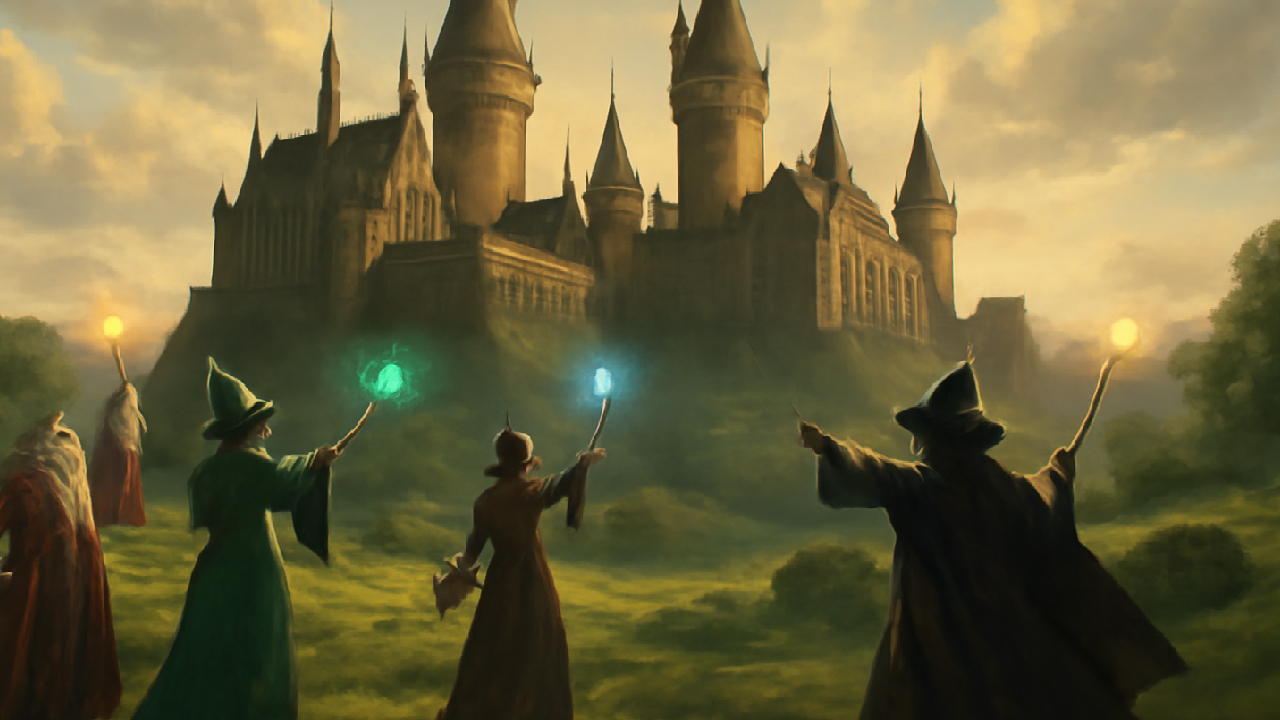
This formal education helped preserve and expand the knowledge of magic, setting the stage for future generations of witches and wizards to understand and master it. 🧙♂️
Ancient Magic and Its Mysteries
Before the establishment of Hogwarts, there was already magic being practiced, but it was a much more mysterious and dangerous form of magic. Known as Ancient Magic, it’s a form of magic that was more powerful and often less understood.
- Sacrificial Magic: One of the most powerful forms of Ancient Magic is the magic of love, as demonstrated by Lily Potter’s sacrifice to protect Harry. This form of magic was unknown to many but proved to be the most potent form of protection.
- The Deathly Hallows: These three magical objects—The Elder Wand, The Resurrection Stone, and The Invisibility Cloak—are tied to Ancient Magic and represent both power and the consequences of immortality.
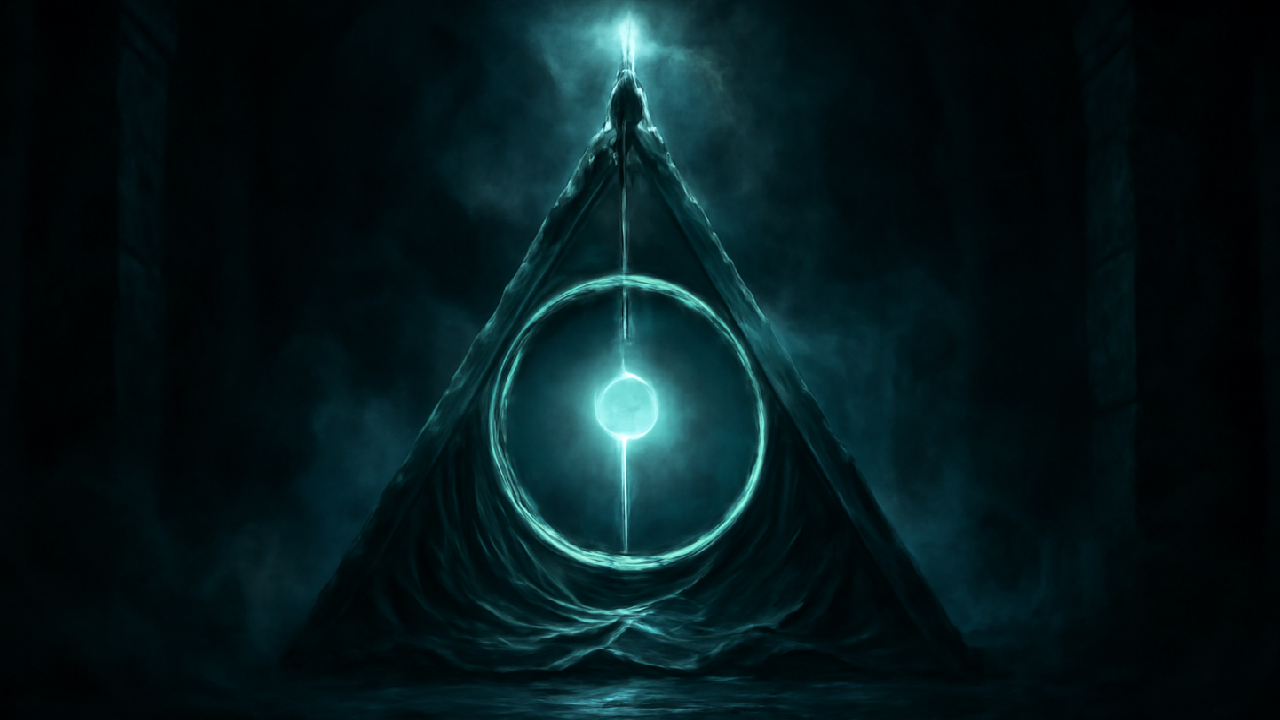
Ancient Magic is both a blessing and a curse. While powerful, it comes with great risks and mysteries that many modern witches and wizards don’t fully understand. 💀
The Role of Magical Bloodlines
While magic is available to anyone who learns how to use it, certain bloodlines in the Wizarding World are more adept at magic than others. Pure-blood wizards, those who come from generations of magical families, are often considered to have a stronger connection to magic.
- Pure-Blood Families: Families like the Malfoys and Blacks have long-held magical traditions and bloodlines that are closely tied to the history of magic.
- Muggle-Borns: Despite the belief of some that magic is exclusive to pure-bloods, many Muggle-born wizards, like Hermione Granger, demonstrate that magic is not restricted by bloodlines. The potential to wield magic exists in everyone.
This concept of magical bloodlines shows how magic is passed down, but also how it can surprise even the most experienced witches and wizards. 🧬
The Different Types of Magic in the Wizarding World
Magic in the Harry Potter universe is far from one-dimensional. It spans a wide variety of forms, each with its own unique characteristics, limitations, and applications. Whether it’s the everyday spells used by wizards or the dangerous curses wielded by Dark wizards, magic influences every corner of the Wizarding World. In this section, we’ll explore the main types of magic in the Harry Potter series and how each contributes to the rich and dynamic world that J.K. Rowling created. ✨
1. Wand Magic: The Heart of Wizardry
Wand magic is the foundation of most wizarding spells and charms. A wand is the key tool that witches and wizards use to channel their magical abilities, casting spells ranging from simple tasks to powerful incantations. The power of the wand depends on several factors, including the type of wood, the magical core, and the skill of the witch or wizard.
- Common Spells: Popular spells like Leviosa (levitation) or Expelliarmus (disarming) are examples of wand magic.
- Spellcasting: The wand acts as a conduit, amplifying the caster’s magical power to perform the desired action.
Without a wand, magic becomes significantly harder to control, making wand magic the core of everyday wizarding life. 🪄
2. Potion-Making: Magic Brewed in Cauldrons
Potion-making is another important aspect of magic. It’s an art that combines magical ingredients with precise techniques to create potions that can heal, transform, or even harm. Potions are brewed by mixing various magical ingredients, and a single mistake can lead to disastrous results.
- Popular Potions: Examples include the Polyjuice Potion (transforming one person into another), Felix Felicis (liquid luck), and Amortentia (the strongest love potion).
- Practical Uses: Potions can heal injuries, create invisibility, or change appearances. They’re powerful tools in a wizard’s magical arsenal.
Potion-making requires skill and knowledge, and even the slightest mistake can turn a beneficial potion into a dangerous one. ⚗️

3. Dark Magic: The Power to Harm and Control
Dark magic is the most dangerous and corrupting type of magic in the Wizarding World. It includes a wide range of spells, curses, and enchantments designed to cause harm, control others, or break the laws of nature. Dark magic is often associated with evil wizards like Lord Voldemort, who use it for control and domination.
- Unforgivable Curses: The three most infamous Dark Arts curses are the Avada Kedavra (Killing Curse), Crucio (Cruciatus Curse), and Imperio (Imperius Curse).
- Corruption: Dark magic corrupts those who use it, often leading them to lose their humanity or become consumed by power.
While Dark magic can grant immense power, it is dangerous and unpredictable, leaving its users vulnerable to destruction. 🖤
4. Ancient Magic: The Lost and Powerful Arts
Ancient magic is an old and mysterious form of magic that is often forgotten or hidden. It’s deeply tied to the natural world and deals with forces that modern magic cannot fully comprehend. Ancient magic is often more powerful and dangerous, and some of its spells and rituals are passed down through secrets and traditions.
- Sacrificial Protection: One of the most notable examples of ancient magic is the protection Lily Potter’s self-sacrifice gave Harry, which shielded him from Voldemort’s curse.
- The Deathly Hallows: The Elder Wand, the Resurrection Stone, and the Invisibility Cloak represent three magical artifacts that embody the power and mystery of ancient magic.
Though rare and often misunderstood, ancient magic is one of the most potent and dangerous forms of magic in the Harry Potter universe. 🏰
5. Magical Creatures: The Magic of Nature
Not all magic is cast with a wand. Magical creatures are an integral part of the wizarding world and often possess inherent magical properties. From giant, fire-breathing dragons to the more mysterious Thestrals, magical creatures are living examples of magic in its purest form.
- Creatures with Magical Abilities: Hippogriffs can bow and communicate with humans, Thestrals are only visible to those who have witnessed death, and Phoenixes possess healing tears and the power of resurrection.
- Impact on Magic: Many magical creatures provide crucial ingredients for potions or help in tasks like transportation or protection.
These creatures embody magic in its most natural state, often reminding witches and wizards of the deep connection between magic and the world around them. 🦄
6. Runes and Ancient Symbols: The Magic of Writing
Runes are an ancient form of magical writing that can be used to cast spells, protect objects, or even trap magical creatures. Runes are often used in combination with other types of magic to enhance the power of spells or to encode secret messages. While not commonly used in everyday magic, runes have an important place in the wizarding world.
- Magical Runes: Runes like Algiz (protection) and Fehu (wealth) have specific meanings and powers.
- Runes in Artifacts: Many magical objects, like enchanted artifacts, are inscribed with runes to give them magical properties.
While runes may not be as commonly seen in the series, they represent a different kind of magic that focuses on written and symbolic power. 🔮
The Powers of Magic in Harry Potter
Magic in the Harry Potter universe is not just about casting spells—it’s a deeply powerful and transformative force that shapes the lives of wizards, witches, and even the entire world. From the simplest charms to the most dangerous curses, magic has the ability to heal, protect, and destroy. In this section, we will explore the vast and varied powers of magic in the Wizarding World, showing how magic influences everything from daily life to the greatest conflicts in the series. ✨
1. Everyday Magic: Making Life Easier
One of the most noticeable aspects of magic in the Wizarding World is its everyday use. Wizards and witches rely on magic for a wide range of tasks, from cooking to cleaning, and even transportation. With a simple wave of the wand, magical tasks that would take Muggles hours can be completed in seconds.
- Simple Spells: Spells like Lumos (lighting a wand) or Wingardium Leviosa (levitating objects) help wizards perform everyday tasks.
- Magical Tools: Items like the Flying Broomstick or Time-Turner make travel and time management easier.
This everyday magic shows how much magic permeates the lives of witches and wizards. It’s not just a tool for grand battles but also a way to make mundane tasks more efficient. 🧙♀️
2. The Power to Heal and Protect
Magic has the power to heal physical wounds, as seen in the magical treatments provided at places like St. Mungo’s Hospital for Magical Maladies and Injuries. Some potions and spells can even restore life or protect people from harm.
- Healing Spells: Episkey (a spell for minor injuries) and Vulnera Sanentur (a more advanced healing spell) are used to mend wounds.
- Protective Magic: Protective spells, like Protego (Shield Charm), are used to defend against harmful magic and physical attacks.
The ability to heal and protect is one of the most important and benevolent uses of magic, making it a central part of the lives of wizards and witches. 🏥
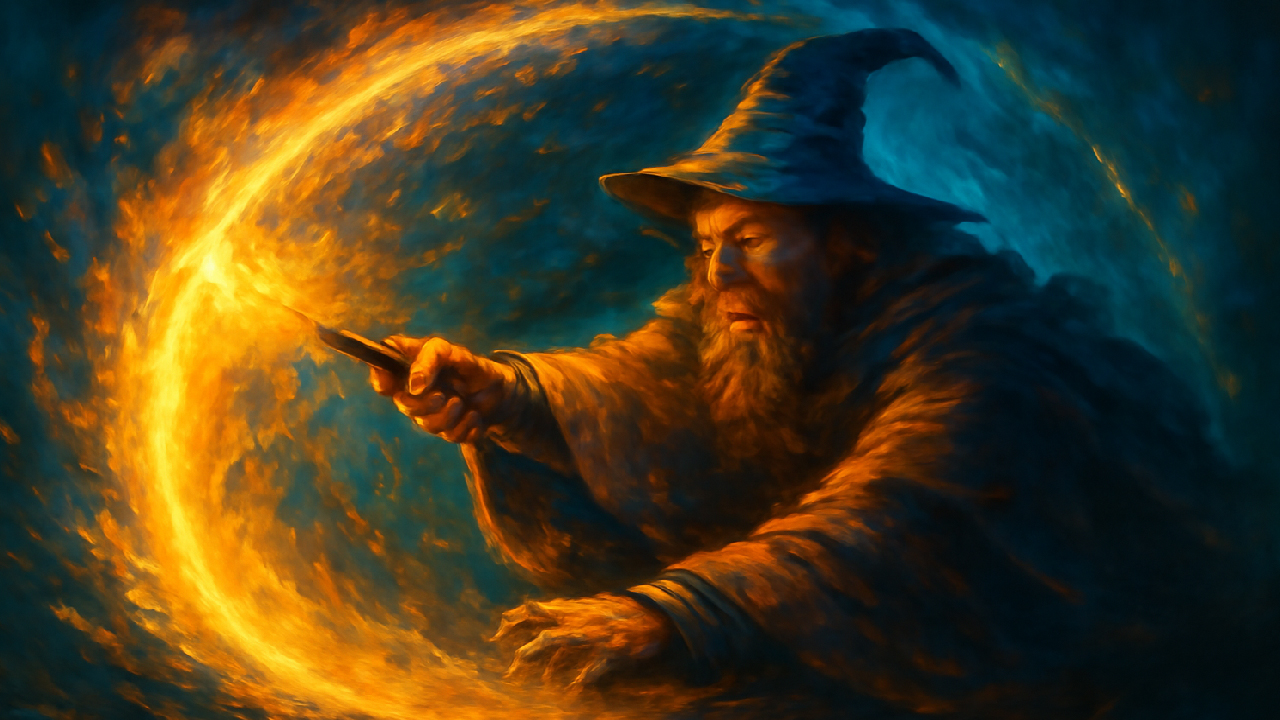
3. The Power to Control and Influence Others
Magic can also be used to control, manipulate, and influence others, often with devastating consequences. While this power is used by some for good, it’s also frequently abused, especially in the hands of Dark wizards.
- Imperius Curse: The Imperius Curse is one of the Unforgivable Curses that allows the caster to control the actions of another person, effectively enslaving them to the caster’s will.
- Love Magic: Potions like Amortentia, the most powerful love potion, can make someone fall in love against their will, showing how magic can be used to manipulate emotions.
This kind of magic highlights the ethical dilemmas that magic can create. While it offers great power, it also comes with the responsibility to use it wisely. 😈
4. The Power to Destroy
Magic can also be used for destruction, and this power is often wielded by those with dark intentions. The most feared spells are those that cause harm or even death.
- Avada Kedavra (The Killing Curse): One of the three Unforgivable Curses, it instantly kills the target without leaving any trace or defense.
- Crucio (The Cruciatus Curse): Inflicts unbearable pain on the victim, often leaving them permanently scarred.
- Destructive Potions: Certain potions, like Veritaserum, can cause destruction through manipulation or truth-telling.
The destructive potential of magic makes it one of the most dangerous forces in the Wizarding World, especially when used with ill intent. ⚡️
5. The Power of Ancient Magic: Unlocking Deep Secrets
Some of the most powerful magic in the Wizarding World comes from the ancient and forgotten arts. This type of magic is often shrouded in mystery, and its full potential is only known to a few.
- Deathly Hallows: The Elder Wand, Resurrection Stone, and Invisibility Cloak are magical artifacts linked to ancient magic, each offering its own form of immense power and immortality.
- Sacrificial Protection: The love Lily Potter showed for her son, Harry, created a powerful protection spell that saved him from Voldemort’s curse. This type of ancient magic is rare but profoundly powerful.
Ancient magic is tied to the deepest, most mysterious forces in the Wizarding World, often having consequences that go far beyond the caster’s control. 🌙
6. The Power of Choice: How Magic Reflects Character
One of the most fascinating aspects of magic in Harry Potter is the way it reflects the character of the person wielding it. Magic is not inherently good or evil—it is the intent of the caster that determines how it will be used.
- Dumbledore’s Army: The members of Dumbledore’s Army use magic to fight against dark forces, proving that magic can be a force for good.
- Voldemort’s Use of Dark Magic: In contrast, Voldemort’s use of Dark magic and manipulation shows how magic can be twisted for selfish gain.
The Cultural and Social Impact of Magic in the Wizarding World
Magic in the Harry Potter universe is more than just a tool or power—it shapes the very fabric of wizarding society. From the way witches and wizards live, work, and interact with each other, magic influences every aspect of their culture. In this section, we’ll explore the deep cultural and social impact that magic has on the Wizarding World, from education and politics to the relationships between magical and non-magical people. 🌍✨
1. Magic and Education: Shaping the Next Generation
One of the most significant cultural impacts of magic is its role in education. Hogwarts School of Witchcraft and Wizardry stands as a central institution in the magical world, where young witches and wizards learn to harness their magical abilities. Education at Hogwarts shapes the minds and values of the next generation of witches and wizards.
- Specialized Subjects: From Transfiguration to Potions, each subject teaches students how to control and apply different types of magic. This ensures that magic remains in the hands of those who are trained to use it responsibly.
- House System: The four Houses—Gryffindor, Hufflepuff, Ravenclaw, and Slytherin—foster different virtues like bravery, intelligence, loyalty, and ambition, which influence how students approach magic.
Hogwarts is not only a school but a cultural institution that deeply shapes the social fabric of the Wizarding World. The lessons taught at Hogwarts echo throughout the lives of witches and wizards, creating a community united by magical education. 🎓
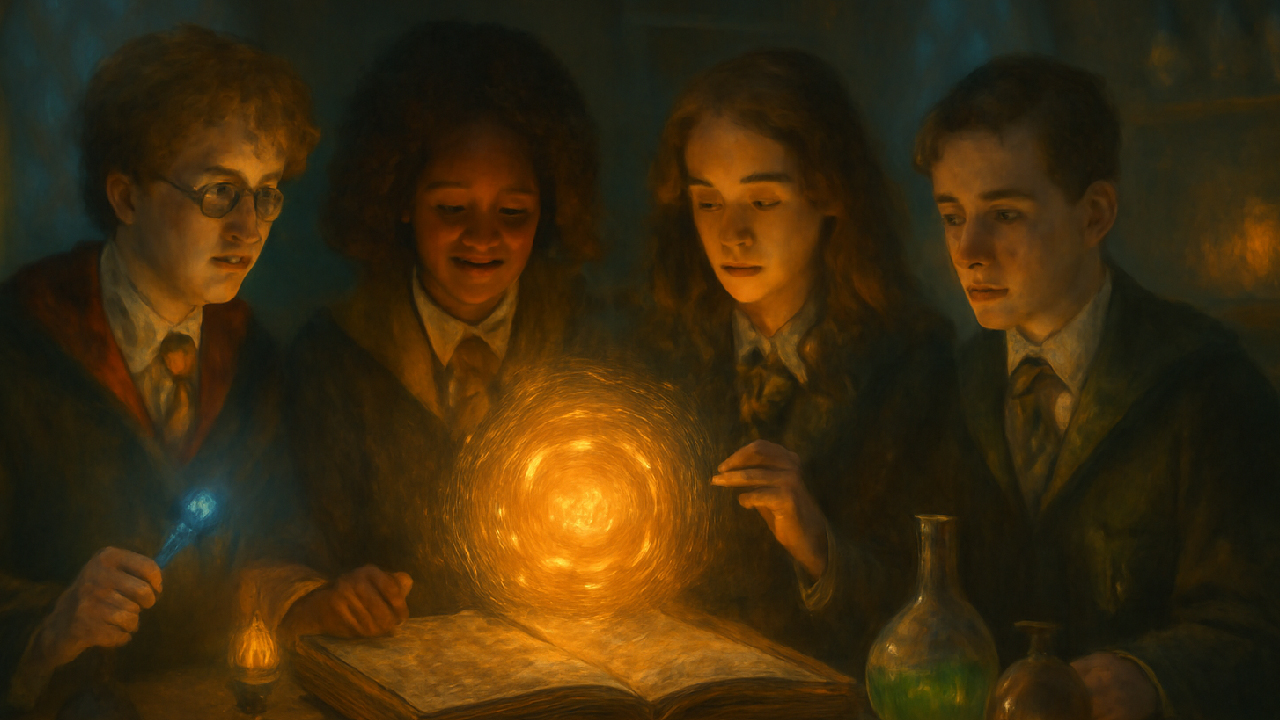
2. The Ministry of Magic: Governance and Regulation of Magic
The Ministry of Magic plays a pivotal role in governing the wizarding world, regulating the use of magic, and maintaining order. The Ministry ensures that magic is used responsibly, while also keeping the magical and Muggle worlds separate.
- Legal System: The Ministry is responsible for enforcing magical laws, such as the Statute of Secrecy, which prevents witches and wizards from revealing magic to Muggles. This law creates a divide between the magical and non-magical communities, influencing social interactions and perceptions.
- Departments and Offices: The Ministry’s various departments, like the Department of Magical Law Enforcement and the Department for the Regulation and Control of Magical Creatures, show how magic is controlled and managed for the greater good.
The Ministry’s influence on magic reflects its importance in keeping the wizarding society orderly and safe, but it also reflects the underlying tension between those who want to use magic freely and those who want to regulate it. ⚖️
3. Muggle and Magical World: The Divide and Tension
One of the most significant cultural aspects of magic is its relationship with the non-magical world (Muggles). The divide between Muggles and wizards creates a unique social dynamic, where magic is hidden from most of the population.
- Secrecy and Tension: The Statute of Secrecy prevents wizards from revealing magic to Muggles, creating a society built on secrecy. This often leads to misunderstandings and even hostility between the two groups.
- Muggle-Borns: Muggle-born witches and wizards, like Hermione Granger, show that magic is not limited to those born into magical families. This raises questions about blood purity and whether magical ability is determined by heritage or skill.
The relationship between Muggles and magical folk is complex and often strained, with tensions brewing over issues like blood purity and the fear of the unknown. This dynamic adds depth to the social landscape of the wizarding world. ⚡
4. Blood Status and Social Class: Magic and Inequality
Blood status plays a significant role in determining one’s position in wizarding society. Wizards and witches from pure-blood families (those who come from generations of magical ancestry) are often considered superior, while Muggle-borns (those born to non-magical parents) may face discrimination.
- Pure-Blood Supremacy: Characters like Voldemort and many of his followers believe in the superiority of pure-blood wizards and seek to rid the world of Muggle-borns. This creates a divide between magical classes and fuels conflict in the series.
- The Fight for Equality: Characters like Hermione Granger and the members of the Order of the Phoenix challenge the pure-blood supremacy ideology, fighting for equality and justice for all magical folk, regardless of their heritage.
This blood-status divide leads to social tensions and conflicts, adding layers of complexity to the magical world’s cultural dynamics. 💔
5. Magic as Identity: Self-Discovery and Personal Growth
Magic also plays a profound role in shaping individual identities in the wizarding world. Many characters struggle to understand their place within society and how their magical abilities define them.
- Harry Potter’s Journey: Harry’s discovery that he is a wizard and his journey to mastering magic mirror his personal growth. His magical abilities are intertwined with his sense of identity, helping him become the hero he is destined to be.
- Hermione and Magic: Hermione’s struggle with being a Muggle-born in a world that often discriminates against her blood status shows how magic can be both a gift and a source of struggle.
The way characters relate to magic plays a key role in their personal development, and this connection helps them navigate the complex cultural landscape of the wizarding world. ✨
6. The Role of Magical Creatures: Nature and Magic in Society
Magical creatures, such as Hippogriffs, house-elves, and Thestrals, have their own unique place in the culture of magic. These creatures are not just tools or pets; they are integral to the magical world’s understanding of nature and its relationship with magic.
- Magical Creatures and Power: Some magical creatures, like dragons and phoenixes, symbolize power and resilience, while others, like house-elves, represent the class divides and tensions within wizarding society.
- Creatures as Companions: Characters like Hagrid form deep bonds with magical creatures, showing how magic and nature are intertwined in the wizarding world.
These creatures play vital roles in both the social structure and the cultural values of the Wizarding World, highlighting the deep connection between magic and the natural world. 🦄
The Philosophy Behind Magic in Harry Potter
Magic in the Harry Potter universe isn’t just a tool or force—it’s a reflection of deeper philosophical themes that explore power, responsibility, and morality. How magic is used, and the choices characters make about using it, are central to the series. In this section, we’ll delve into the philosophy behind magic in the Wizarding World, examining its moral implications, the balance of power, and the deeper lessons it teaches us. ⚖️✨
1. Magic as a Reflection of Choice
One of the most significant philosophical aspects of magic in Harry Potter is its relationship with choice. Magic in the wizarding world is not inherently good or evil; it’s the intent of the user that determines how it will be used. This aligns with a central theme of the series: the power of choice.
- Good vs. Evil: A simple spell, like Expelliarmus (the Disarming Charm), can be used for defense or for attack. It’s the wizard or witch’s intent that shapes its outcome.
- The Sorting Hat’s Wisdom: In choosing a House for Harry, the Sorting Hat famously says, “It’s not our abilities that show what we truly are… it is our choices.” This reflects how even the greatest powers—like magic—are shaped by our decisions.
The ability to choose how to use magic emphasizes personal responsibility and the moral weight of one’s actions, showing that true power lies in how we decide to wield it. 🌟
2. The Corruption of Power: Magic and the Temptation of Control
While magic can be used for good, it also carries the risk of corruption. The more power one gains, the easier it becomes to misuse it. This theme is particularly evident in the darker side of magic—Dark Arts—which seeks to control and dominate rather than protect and nurture.
- Voldemort and the Abuse of Power: Lord Voldemort’s descent into dark magic shows how the pursuit of power for its own sake can lead to the corruption of the soul. The use of Unforgivable Curses and his obsession with immortality reveal his desire for control at any cost.
- Dumbledore’s Wisdom: In contrast, characters like Albus Dumbledore emphasize the importance of restraint. Dumbledore chooses to wield his power carefully, knowing that unchecked power can destroy both the wielder and the world around them.
This philosophical dilemma—whether to use power responsibly or to seek domination—is at the heart of many characters’ journeys and is central to the story’s moral framework. 💡
3. Magic as a Force for Love and Sacrifice
One of the most powerful messages about magic in Harry Potter is how love and sacrifice are forms of magic in themselves. The selfless acts of love and protection in the series transcend spells and curses, showing that magic isn’t just about spells—it’s also about emotional and moral strength.
- Lily Potter’s Sacrifice: The love Lily Potter has for Harry creates an unbreakable protection that shields him from Voldemort’s curse. This type of magic—based on love and sacrifice—is one of the most potent forces in the series.
- Harry’s Own Sacrifice: At the end of the series, Harry’s willingness to sacrifice himself to destroy Voldemort highlights the power of selflessness and the protection that comes from love.
This philosophy teaches readers that magic is not only about power or skill—it’s also about the emotional and moral choices we make, and how these choices can create the strongest forms of protection and change. ❤️
4. The Limits of Magic: The Acceptance of Life’s Natural Boundaries
Magic in Harry Potter is a vast and powerful force, but it’s not all-powerful. There are things that even magic cannot change, and this limitation is a central philosophical lesson in the series. Magic cannot undo death, reverse time, or overcome the natural order of life.
- The Deathly Hallows: The pursuit of the Deathly Hallows symbolizes mankind’s attempt to conquer death, but the true lesson is that death cannot be cheated. The Resurrection Stone may bring back shadows of the past, but it cannot truly revive the dead.
- Harry’s Acceptance of Death: In the final moments of the series, Harry accepts that death is inevitable, and his willingness to face it is what ultimately allows him to triumph over Voldemort.
The message here is clear: magic has its limits, and accepting the natural order of life and death is a key part of wisdom and maturity. 🌙
5. The Importance of Unity: Magic as a Force for Connection
Another crucial aspect of magic in Harry Potter is its role in bringing people together. Whether it’s through the bonds of friendship, loyalty, or shared purpose, magic often serves as a force that unites characters to fight for the greater good.
- Dumbledore’s Army: The creation of Dumbledore’s Army is a prime example of how magic can unite individuals for a common cause. The group, composed of students from different Houses, works together to learn magic and stand up against Voldemort’s forces.
- The Power of Friendship: Harry, Hermione, and Ron demonstrate how magic—while powerful—cannot replace the strength that comes from mutual support and companionship. Their bond makes them stronger than any spell.
Magic in the Harry Potter series is not just about individual power—it’s about collective effort and the strength of unity in the face of adversity. 🤝
How Magic in Harry Potter Relates to Real-World Concepts
Magic in the Harry Potter universe may seem like an otherworldly fantasy, but it actually draws many parallels to real-world concepts. From the exploration of science and nature to ancient mythology and human emotions, the magic in Harry Potter offers a rich tapestry of ideas that reflect real-world beliefs and principles. Let’s dive into how magic in the Wizarding World connects to real-world concepts, providing both educational insights and deeper connections to our own world. 🌍✨
1. Magic as a Reflection of Natural Forces
One of the most striking real-world parallels to magic in Harry Potter is its connection to nature and the environment. In the wizarding world, magic is not just a set of spells—it’s an intrinsic part of the natural world.
- Alchemy and Transformation: The concept of Alchemy, the ancient practice of transforming base metals into gold, mirrors how magic in Harry Potter is used to alter substances or transform one thing into another (like turning a rat into a cup in Transfiguration).
- Natural Elements: Magic in Harry Potter often involves elements of nature, such as plants (used in potion-making) or magical creatures. This reflects how ancient cultures believed that certain elements of nature had magical properties, a concept that aligns with real-world traditions like herbalism and animism.
This connection between magic and nature speaks to how humans have long sought to understand and harness the forces of nature for both practical and mystical purposes. 🌱
2. Magic and the Ethics of Power
The ethical dilemmas around the use of magic in Harry Potter are a direct reflection of real-world concerns about power and its consequences. Throughout history, societies have grappled with how to control power, whether it’s through politics, religion, or technology. In the Wizarding World, magic serves as both a tool for great good and a weapon for devastating harm.
- The Use of Power: Characters like Voldemort use magic to control and harm others, while characters like Dumbledore emphasize responsibility and restraint in using magic. This mirrors real-world discussions about the dangers of unchecked power, whether in politics, technology, or personal relationships.
- Moral Responsibility: The idea that “with great power comes great responsibility” resonates in the Wizarding World. The moral choices made by Harry and other characters show that how power is used matters just as much as the power itself.
These ethical considerations in magic offer a reflection of our own real-world struggles with power, control, and responsibility. ⚖️
3. The Role of Ancient Magic and Mythology
Much of the magic in Harry Potter is inspired by ancient myths, legends, and folklore. From creatures like dragons to objects like the Deathly Hallows, the magical world draws heavily on myths that have been passed down through generations. These real-world myths often hold deeper meanings about life, death, and the human experience.
- The Deathly Hallows: The Resurrection Stone, Invisibility Cloak, and Elder Wand are inspired by traditional myths about immortality, death, and fate. The idea of trying to conquer death is rooted in ancient mythologies, like those of Greek and Egyptian origin.
- Magical Creatures: Creatures like unicorns, griffins, and mermaids are borrowed from mythological creatures in cultures worldwide. In many ways, these magical beings represent the mysteries and wonders of the natural world, reflecting humanity’s desire to understand the unknown.
Through these references to mythology, the Harry Potter series ties magic to timeless human questions about existence, the afterlife, and the forces that govern life. 🦄
4. Magic and Emotional Intelligence
Magic in Harry Potter is not only about casting spells or brewing potions—it also relates to the characters’ emotional growth and intelligence. Characters use their emotional intelligence, such as love, empathy, and bravery, to fuel their magic, showing that personal growth plays a key role in magical power.
- The Power of Love: One of the most significant real-world lessons in the series is the idea that love is the most powerful form of magic. Lily Potter’s sacrifice to protect Harry and Harry’s ability to love even his enemies serve as reminders of how emotional intelligence can overcome even the darkest forces.
- Empathy and Understanding: The ability to empathize with others and understand their pain is a crucial skill in magic. For instance, Hermione Granger uses her intelligence and compassion to help others, reflecting how emotional intelligence can guide moral choices.
This shows that magic, at its core, is deeply connected to human emotions and relationships, offering valuable insights into how we can use empathy and love in our own lives. 💖
5. Magic and the Intersection of Science
While magic is supernatural in the Harry Potter universe, many aspects of it can be compared to real-world science, especially in areas like chemistry, physics, and biology. Potion-making, for example, mirrors chemistry, and the rules governing magical creatures often reflect principles of biology and zoology.
- Potion-Making and Chemistry: The careful mixing of ingredients in potion-making is reminiscent of chemical reactions in real-world science. Potions like Felix Felicis (Liquid Luck) or Polyjuice Potion show how scientific principles like balance and reaction are central to achieving magical outcomes.
- Magical Creatures and Biology: The creatures in Harry Potter, such as dragons, Thestrals, and house-elves, are biologically complex beings, each with their own natural habitats, behaviors, and characteristics. This reflects the way real-world biology strives to understand and categorize life.
In this sense, the world of magic in Harry Potter is a blend of fantasy and scientific exploration, showing how magic can mirror the natural world’s wonders and complexities. 🔬
Magic in the Harry Potter series is far more than just spells and potions—it’s deeply woven into the fabric of the wizarding world, influencing everything from personal identity to global events. By understanding its origins, powers, and impact, we gain a richer perspective on the magical universe J.K. Rowling has created deeper themes that resonate with us all.
Whether it’s the magic of love, the importance of choice, or the struggle between good and evil, the true nature of magic in Harry Potter reflects the complexity of human experience. Magic is both a gift and a responsibility, and how it’s used determines its effect on the world around us. The lessons about power, responsibility, and the consequences of our actions are as relevant to our lives as they are to the characters in the books.
As you reflect on the magical world, remember that the true magic lies not just in wands or charms, but in the choices we make every day. Just as Harry and his friends learned to use their magic for the greater good, we too have the ability to create change, whether through small acts of kindness or by standing up for what’s right.
So, while the magic of the wizarding world may be fictional, the lessons it teaches about bravery, friendship, and responsibility are real. Embrace your own power and the magic within you—just as Harry and his friends did. 🌟✨
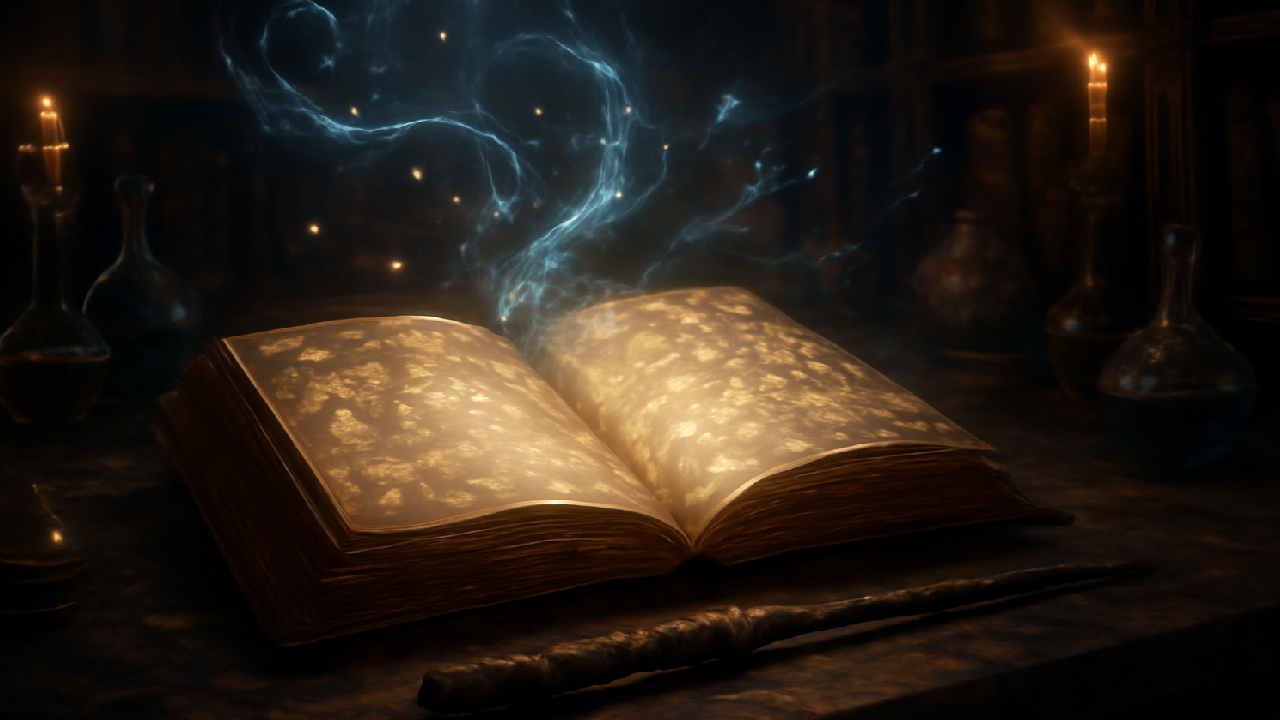
Frequently Asked Questions (FAQs)
1. What is the true nature of magic in the Harry Potter universe?
Magic in the Harry Potter universe is an ancient, natural force that exists within the world and is harnessed by witches and wizards. It is intertwined with the environment, magical creatures, and even emotions, showing that magic is more than just a tool—it’s a powerful, living force that influences every aspect of the Wizarding World.
2. How did magic originate in Harry Potter?
Magic in Harry Potter has existed since the beginning of time and was discovered, not created. It is deeply connected to nature, and early witches and wizards first tapped into this power through ancient practices. The Hogwarts founders helped structure magic into formal education, making it more accessible for future generations.
3. What are the different types of magic in Harry Potter?
The main types of magic in Harry Potter include wand magic (spells and charms), potion-making (creating magical potions), dark magic (curses and dangerous spells), and ancient magic (forgotten or mystical magic like sacrificial protection). Each type of magic serves a unique purpose, from everyday tasks to life-changing transformations.
4. How powerful is magic in the Harry Potter series?
Magic in Harry Potter is incredibly powerful, capable of shaping the world, healing injuries, and even altering reality. However, it’s not unlimited—certain spells are irreversible, and some magical forces, like death, cannot be overcome. The power of magic also depends on the witch or wizard using it and their intentions.
5. Can magic be used for evil in Harry Potter?
Yes, magic can be used for evil in Harry Potter. Dark magic, including the Unforgivable Curses, is used to cause harm, control others, or even kill. Characters like Voldemort demonstrate how magic can be abused when used for selfish and destructive purposes, showing the dangers of unchecked power.
6. What role does love play in magic in Harry Potter?
Love plays a crucial role in magic in Harry Potter. Lily Potter’s sacrificial love for Harry created a powerful protective magic that saved him from Voldemort’s curse. Throughout the series, love is shown to be the most powerful force, often more potent than any spell, protecting characters and overcoming dark forces.
7. How does magic impact society in the Wizarding World?
Magic profoundly impacts society in the Wizarding World, from education at Hogwarts to the governance by the Ministry of Magic. It affects social structures, like blood purity and class divisions, and influences relationships between wizards and Muggles. Magic is also used for practical purposes, like transportation, communication, and even legal matters.
8. What is the significance of ancient magic in Harry Potter?
Ancient magic in Harry Potter is a mysterious, powerful form of magic that predates modern magical education. It includes powerful spells, artifacts like the Deathly Hallows, and rituals that have profound effects on life and death. Ancient magic often ties into themes of immortality and sacrifice, showing that magic is both a blessing and a burden.
